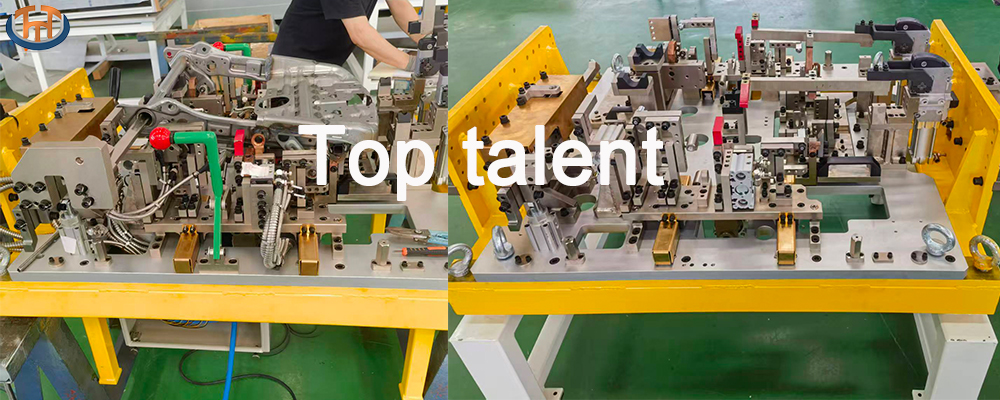When you slide into the driver’s seat of a car, you’re engaging with one of the most critical safety components in the vehicle. Beyond the comfort and aesthetics, the seat’s structural integrity is paramount. This integrity isn’t born on the assembly line; it’s forged in the precision of the welding process, guided by an unsung hero of automotive manufacturing: the welding fixture.
For anyone in automotive manufacturing or sourcing, understanding the role of a seat welding fixture is key to ensuring quality, efficiency, and ultimately, passenger safety.
What is an Automotive Seat Welding Fixture?
In simple terms, an automotive seat welding fixture is a custom-designed, rigid framework that holds the various metal components of a seat frame—such as the backrest, cushion pan, and adjustment mechanisms—in perfect alignment during the welding process. Think of it as a high-tech, industrial-grade jig or mold.
Its primary function is to eliminate human error and variation. By clamping each part into its exact predetermined position, the fixture guarantees that every seat frame coming off the production line is identical to the last. This repeatability is non-negotiable in an industry where a millimeter’s deviation can lead to catastrophic failure.
The Critical Role of Welding Fixtures in Seat Manufacturing
Why is this specialized tool so indispensable? The reasons are multifaceted:
Uncompromising Precision and Dimensional Accuracy: A car seat is a complex assembly that must interface perfectly with seat belts, airbag sensors, and vehicle floor anchors. A welding fixture ensures that all mounting points, bolt holes, and critical geometries are positioned with microscopic accuracy, ensuring the seat performs as designed in a collision.
Enhanced Structural Integrity and Safety: The welds themselves are the backbone of the seat structure. By providing optimal access for welding torches (manual or robotic) and ensuring perfect fit-up between parts, fixtures facilitate consistent, high-strength welds. This directly contributes to the seat’s ability to withstand crash forces without collapsing.
Dramatically Increased Production Efficiency: Time is money in automotive manufacturing. A well-designed fixture allows for rapid loading and unloading of components, often by a single operator. This streamlines the workflow, reduces cycle times, and enables high-volume production to meet demanding targets.
Cost Reduction Through Error Elimination: Rework is a significant cost driver. By preventing misaligned welds and dimensional errors from the start, fixtures drastically reduce scrap rates and the need for costly corrective work, protecting the bottom line.
Key Design Considerations for an Optimal Welding Fixture
Not all fixtures are created equal. Designing an effective automotive seat welding fixture requires a deep understanding of both engineering and production realities:
Robustness and Rigidity: The fixture itself must be built from durable materials like high-grade steel to withstand constant thermal stress from welding, mechanical clamping forces, and the rigors of a factory environment without warping.
Ergonomics and Accessibility: A fixture must be designed with the operator in mind. Clamps should be easy to engage, and the design should provide clear, unobstructed access for welding guns to ensure consistent weld quality and operator safety.
Future-Proofing and Flexibility: As car models evolve, so do their seats. Modern fixtures are increasingly designed with modularity in mind, allowing for adjustments to accommodate different seat variants or future design changes without requiring a completely new fixture.
Integration with Automation: With the rise of robotic welding cells, fixtures must be designed for seamless integration. This includes features for precise robotic locating and the ability to handle automated loading and unloading systems.
The Bottom Line: An Investment in Quality
An automotive seat welding fixture is far more than a simple tool; it is a foundational investment in product quality and manufacturing excellence. It is the silent guardian that ensures every vehicle seat is not only comfortable but is also a robust and reliable safety system. By ensuring perfect welds and perfect geometry, these fixtures play an indispensable role in building the trust that drivers place in their vehicles every single day. For manufacturers, partnering with a fixture designer who understands these critical nuances is the first step toward achieving that standard of excellence.
Post time: Oct-24-2025



.png)
.png)